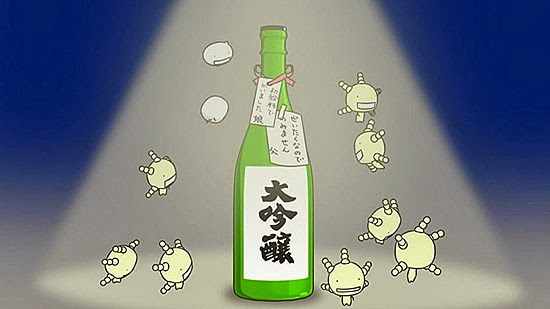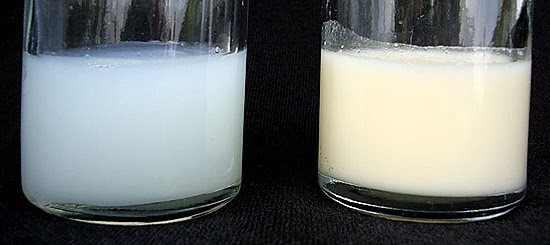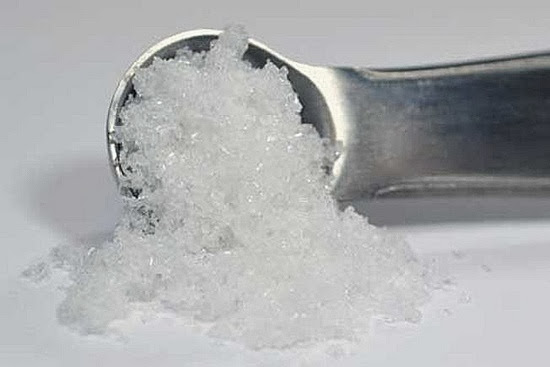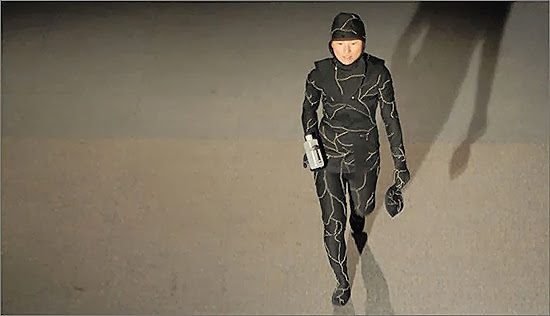
7 Foods and Beverages Made Using Ingredients from the Human Body
By Lauren Davis, io9, 25 December 2013.
By Lauren Davis, io9, 25 December 2013.
While eating human flesh may be the ultimate taboo, human microbes, saliva, and even hair have been integral to the making of certain food and beverages. From traditional brews to culinary concept art, here are seven edibles that started, in part, inside the human body.
1. Kuchikami Sake
The use of human saliva in fermentation actually predates the advent of rice farming in Japan. During the Jōmon period, folks would chew starchy foods like acorns, millet, and buckwheat to create fermentation starters. The amylase enzymes in human saliva breaks down the complex sugars in these foods, after which wild yeasts could feed on the sugars and convert them into alcohol. With the introduction of wet rice farming came the earliest forms of sake; the brewer would have someone (preferably a female virgin, according to some sources) chew a few mouthfuls of rice and spit them into a larger vat of rice and leave the mixture to ferment into kuchikami-zake, "mouth-chewed sake." However, by the time the Imperial brewing department was established in the city of Nara in the late 7th century, other methods of sake brewing had risen to prominence, making kuchikami sake largely a thing of the past.
2. Chicha
Photo by David Berkowitz
Much like sake, the largely maize-derived beverages known as chicha can be prepared by first germinating the starches or chewing them to break down the complex sugars into maltose. Chicha also goes back millennia; in the Inca Empire, women who served the cloistered Aqlla Wasi ("House of the Chosen Women") learned to brew chicha for rituals. The beverage is still brewed in parts of modern Central and South America, and in some places, human saliva is still an integral part of the process. Another traditional chicha-like beverage is called nihamanchi and is prepared by chewing and fermenting manioc tubers.
3. Breast Milk Dairy Products
Of course, there is one complete food that some humans produce straight from their own bodies: breast milk. Breast milk provides all of the nutrition a growing human needs, and it may be possible even for adult humans to survive entirely on a diet of the stuff. And recently, some culinary adventurers have been experimenting with making foodstuffs from human milk the same way we typically make them from cow, sheep, and goat's milk. In 2011, a London ice cream shop known as The Icecreamists made a human milk ice cream called "Baby Gaga." (The first batch sold out in a few days at £14 per serving.) Manhattan chef Daniel Angerer incurred the wrath of the New York Health Department in 2010 after serving cheese made from his wife's breast milk at his Klee Brasserie. And in 2011, Miriam Simun launched the Lady Cheese Shop, a temporary art installation at a New York gallery where she invited patrons to taste various breast milk cheeses. Plus, nursing mothers have experimented with breast milk recipes in the privacy of their own homes. Earlier this year, Inhabitots rounded up ten breast milk recipes, from Your Milk Yogurt to Breast Milk Butter to Lactation Lasagna.
4. Human Microbe Cheese
Image from Synthetic Aesthetics
You can contribute to the making of cheese even if you don't lactate. Biologist Christina Agapakis recently teamed up with odour artist Sissel Tolaas to craft 11 cheeses cultured using human microbes. They swabbed between toes, inside mouths, and even in food writer Michael Pollan's bellybutton to create cheeses that are the antithesis of the antiseptic foods so common in Western cuisine. However, the emphasis of the project was on the odour, rather than the flavour, of the resulting cheeses.
5. Some Products Containing L-cysteine
Photo credit: Pure Bulk
L-cysteine is an amino acid that is frequently found as a softening agent in commercial bread products, such as bagels, packaged bread loaves, and pizza dough. It can be harvested from duck feathers or synthesized in a lab, but what turns a lot of folks off to the additive is that it can also come from human hair. It's unclear, however, how much human hair-derived L-cysteine ends up in our food, however. In 2010, Mother Jones questioned a number of companies about the origins of their L-cysteine, and few were willing to give a definitive answer (and the few that did answered, "duck feathers"). A researcher at one dough conditioning company claimed that "plenty of companies" harvest theirs from human hair.
6. Products Containing Human-Derived Probiotics
Photo credit: Probiotics Research
You know all those advertisements touting the health benefits of microbe-infused yogurts and dairy drinks? What they usually don't tell you is where the parents of those microbes originated. It makes sense that many probiotics that are supposed to have a positive impact on your microbiome would have their origins in the human gut, but it doesn't make for great marketing. For example, Yakult contains the bacterium strain Lactobacillus casei Shirota, which a paper in Clinical and Vaccine Immunology notes was originally isolated from human faeces at the Yakult Central Institute for Microbiological Research.
7. Corpse-Eating Mushrooms
Image from the Infinity Burial Project
Here's the good news for squeamish eaters: you probably won't be eating mushrooms reared on the decay of human corpses any time soon. Certain mushrooms belonging to the genus Hebeloma thrive around mammal carrion, including human corpses. In fact, Hebeloma syriense is known as the "corpse finder" mushroom because of its tendency to grow near and above human corpses. However, most species of Hebeloma are considered inedible, and many are actually poisonous. Just two species are listed in guides as edible: Hebeloma mesophaeum and Hebeloma fastibile. But artist Jae Rhim Lee recently made headlines with her Mushroom Death Suit concept, which imagines corpses buried in a suit covered with edible mushroom spores. Lee uses shiitakes and oyster mushrooms for her initial concept, both of which are typically cultivated on trees. Oyster mushrooms are actually one of the few carnivorous species of mushrooms, but they chow down on nematodes, not rotting mammals. We'll have to see how Lee's tests on her burial suit pan out.







Sudah di link kan dalam blog saya. Terima kasih.
ReplyDeleteAlizul